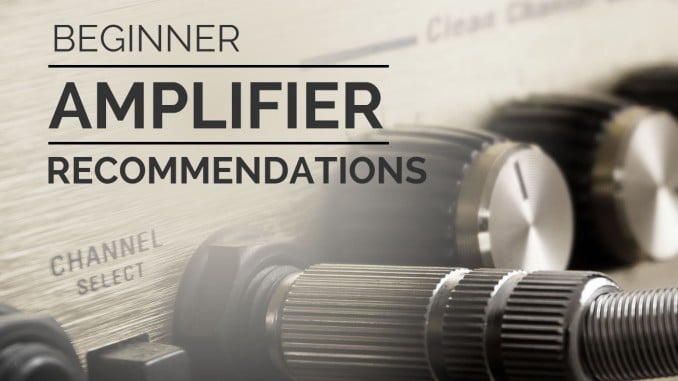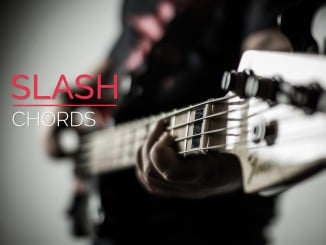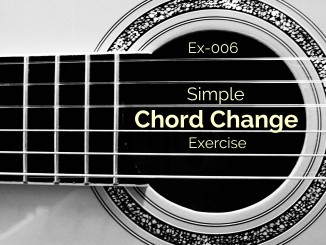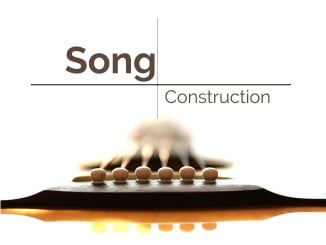
Learn about beginner guitar amplifiers, software modeling, and my top recommendations for each. Amplifiers can change the sound of the guitar more than the guitar itself. Today’s beginner amps can model expensive tube amplifiers for pennies on the dollar. Let’s learn everything you need to know about amplifiers.
5 Beginner Amp Requirements
Beginners need a few things in their amplifier. If they don’t have these 5 things, they will want a new amplifier sooner rather than later.
- Versatile so you get a lot of different sounds
- Loud enough to play with others
- Great value so you can afford it when you’re starting
- Extra features such as a headphone jack, USB, and aux port
- Portability
Versatile Modeling Amps
Technology has totally changed the beginner amplifier market in recent years. Today’s amps can model the sound of expensive amplifiers. This can provide a great value, but not all amplifiers are modeling amps. Many beginner amplifiers only include two channels, one for clean sounds and one for overdrive/distorted sounds.
If you buy a 2-channel amplifier, I guarantee that you’ll want to upgrade it if you stick with the guitar. Simply, if you buy cheap, you’ll buy again. That doesn’t save anyone money. This is why I recommend budgeting for a modeling amplifier.
Loud Enough to Play with Others
In general, the higher the wattage, the louder the amp. I recommend 15 – 20 watts for a beginner. This wattage is loud enough to play with other guitarists. If you want to play with a drummer, you will want a 20 watt or higher amp.
You may notice that the speaker size increases with amp wattage. Guitar amps typically have 8, 10, or 12″ amps. You should expect an 8″ speaker in a 15-20 watt amplifier.
Extra Features
Here are a few extras that you can find on some beginner amplifiers.
- Amp models – I’ve seen amps with over 20 amp models.
- Built-in tuner – this is very convenient.
- Headphone Jack – play quietly while others sleep!
- Aux jack – plug your phone into your amp to play as a backing track. I absolutely love this feature.
- USB connectivity – This lets you record without extra gear or update your amp presets.
- Effects – Some amps have stompbox style effects.
- Foot pedal – Who doesn’t want to tap a button to switch channels/models for the big solo?
I mention all these features because the upper end of the beginner price range will give you this entire list. The lower end will only give you two channels. Is it worth $50 more to get all these features?
Portability
Portability is important so you can easily transport your amplifier to play with your friends. You also need to transport it if you take lessons. Beginner amps weigh 20 pounds or less, so they’re all portable. Some more expensive amps are larger and heavier. They sound great, but are designed for playing loud in a live venue. I would not start with this type of amp. With today’s modeling amplifiers, you can get a light, portable amp that sounds just as good for beginner prices.
Some amps are battery powered. These are usually under 10 watts. I own a battery powered amp, the now-discontinued Roland Micro Cube. It is a 6 watt amp. I love the portability. It is not loud enough to play in some scenarios, but it has good tone out of the box.
Beginner Amp Costs
New beginner amps cost $50 to $150. 2-channel amps cost around $60 – $100. Modeling amplifiers cost around $130 – $200+. Resale value on beginner amps is around 50%. So if you buy a $60 amp, it will sell used for around $30. My favorite recommended modeling amp cost around $150.
Headphone Amplifiers
I generally don’t recommend standalone headphone amplifiers because you can’t play with someone. I have some great (and well-priced options listed below). If you do go this route, I have to tell you about the wireless Boss WAZA Air ($419). I’ve heard Yngwie Malmsteen uses it. It is exceptional, however I wouldn’t buy it as my primary amplifier because there are some great modeling options that you can use with your PC, phone, or tablet.
Audio Interface with Software Modeling on PC, iOS, and Android
Audio interfaces are used for running your guitar signal through a computer (PC, iOS, or Android). You can get one for $50 – $1000+ depending on the features you want. There are some great portable ones for less than $100. I love this option for beginners because it is extremely versatile. You can play with your PC, your phone, record, or even livestream.
Recommended Audio Interface for PC and iOS
If you want to run through a PC or iPhone, I recommend the budget-friendly and portable interface is iRig HD 2 ($79.99). It gives you a guitar input and outputs for an amplifier or headphones. Also, it’s powered from the USB port. It works well with PC, Mac, iOS phones, and iOS tablets. On top of this, it comes with a version of my favorite modeling software, Amplitube.
Recommended Android Audio Interfaces
If you want to run on Android devices, you will have to do some research on your device because Android audio latency is inconsistent from device to device. Because of this, the best option to recommend is the iRig UA because it offloads some audio onto the custom hardware device. It is limited to the Amplitube UA app. So this interface is limited in options, but it will give you some good models with consistent performance.
If your Android device has acceptable you can use the audio jack with iRig 2 ($39.99) with apps like Deplike and Tonebridge. Unfortunately, there is no Amplitube app that works with audio jack interfaces on Android. Personally, I use this setup with Deplike on my Android phone (which has good latency). My android tablet, however, has noticeably slow latency.
Tube Amps
As much as I love tube amps, modeling has made them impractical for beginners. The tonal options are limited to the amp’s intrinsic capabilities, they cost double, and tubes are not cheap to replace. However, if they give the tone you want, it’s heavenly. I loved my Marhsall JTM 312, but I ultimately sold it for a modeling amplifier. Because the price would be at least $299, I can’t recommend them to beginners when modeling amps are so cheap and versatile.
Head Units
Head units are amplifiers that connect to a separate speaker cabinet. These are used for live performances when you need to play loud, such as an outside venue. I don’t recommend them for beginners. They’re expensive and are generally too loud for practicing by yourself.
My Top 2 Modeling Amps
If you want a 2-channel amplifier, I would search for the best price you can find. A couple weeks ago, I recommended the Fender Squier Affinity Value Pack to a friend, which included a 2-channel amp. The value pack costs a little more than the guitar by itself, but it included an amp, strap, gig bag, tuner, picks, and more. The deal was too good to pass up, but he still plans to upgrade his amp in the future. This is a great value when paired with the iRig HD 2 because you can output the fully modeled signal from the iRig HD 2 to the 2-channel amp
1. Fender Mustang Series (Best Value)
The Fender Mustang LT-25 ($149.99) is now my top recommended beginner amp due to it’s value for the money. It has timeless Fender amp models, it’s loud enough to play with people, and the cost is reasonable. It has USB connectivity and all the features you could want in a 25 watt configuration. If you want one that is loud enough for gigs, I recommend the Fender Mustang LT-50 provides 50 watts at $249.99 and a 12″ speaker.
2. Boss Katana Series
The Katana series is extremely popular with simple controls for models. I recommend the Boss Katana Mini. It’s only 7 watts so it may not be loud enough for a band, but it models some great tones. It can also be battery powered! The drawback is that it won’t be loud enough to play with a full band and it does not have USB connectivity for recording.
If you want a Katana with more power and features, I recommend the Boss Katana 50 MK II ($239.99). At 50 watts, you can certainly gig with this amp. It gives you USB connectivity and many more effects. It’s more money than the Fender Mustang, but it also has more power.
Conclusion
I hope this article helps you figure out what a beginner should get in an amp. When I started in 1996, I bought a 2-channel amplifier because modeling amps didn’t exist yet. One year later I spent $499 for a tube amplifier. Now I own a $200 modeling amplifier, but I prefer to play with Amplitube on my PC/Laptop. I hope this article empowered you to decide on the best option. If you decide to buy, please consider using the links on this page, which will help support Guitar Lesson World at no cost to you.
If you have any questions or feedback, contact me. I’d love to hear it. You can also check out my other recommendations.





These new solid state amps cannot produce good clean tones. I tried many of them.
I’ve found a video with interesting info about amplification and gear. It’s helping me a lot:
https://www.youtube.com/watch?v=gdHPKrkVYug
Sam, Thank you for the comment. The video you posted contains a lot of information on understanding several aspects of guitar tone. I enjoyed reading it. The author of it also likes amp models/simulators because you can record them directly through USB like the modeling amps that I mention above.
Did you know that many guitars resonate on a harmonic, meaning that the overtone (an octave or two higher) rings louder than the fundamental (the note you intend to play). I wrote a guitar tuner once and my friend, who has a PhD in acoustics, thought the overtones were interesting. Sometimes these louder overtones give the tone that you love. Your pickup and its location will affect the response. I could geek out on this stuff all day, so I’ll stop there.
Thanks for sharing!
Interesting article, I did a lot of research last year looking for an amp in this price range. When I narrowed it down to my top 5 choices, both of the ones you listed here made the list but I ended up choosing the Blackstar ID:Core 20 and am pretty happy with it, light and portable but with pretty good sound & volume and lots of features. I think all 3 would be great choices.
I bought the Fender Mustang amp and with the USB connectivity and I absolutely love it. I no longer have one amp, I have them all. The tweaking to the presets you can do on the computer is unlimited, and it sounds great. In fact, I have found the tones I have been looking for, for the first time in my life. Price is way more then reasonable given the features it has.
It sure is nice that you pointed out how beginner amps can cost somewhere between 50 to 150$. My sons are really big on guitars, and I think they have mentioned how they would want to start a band with their friends. Should they decide to go through with it, I’ll be happy to get them their new beginner-level amps that are budget-friendly.
Boss katana 100 purchased no problems yet love the fact I can switch the amps wattage.05 watts.,50watts, or 100watts (never used)
I’m glad you are enjoying your amp purchase! The right amp can add so much enjoyment to playing.